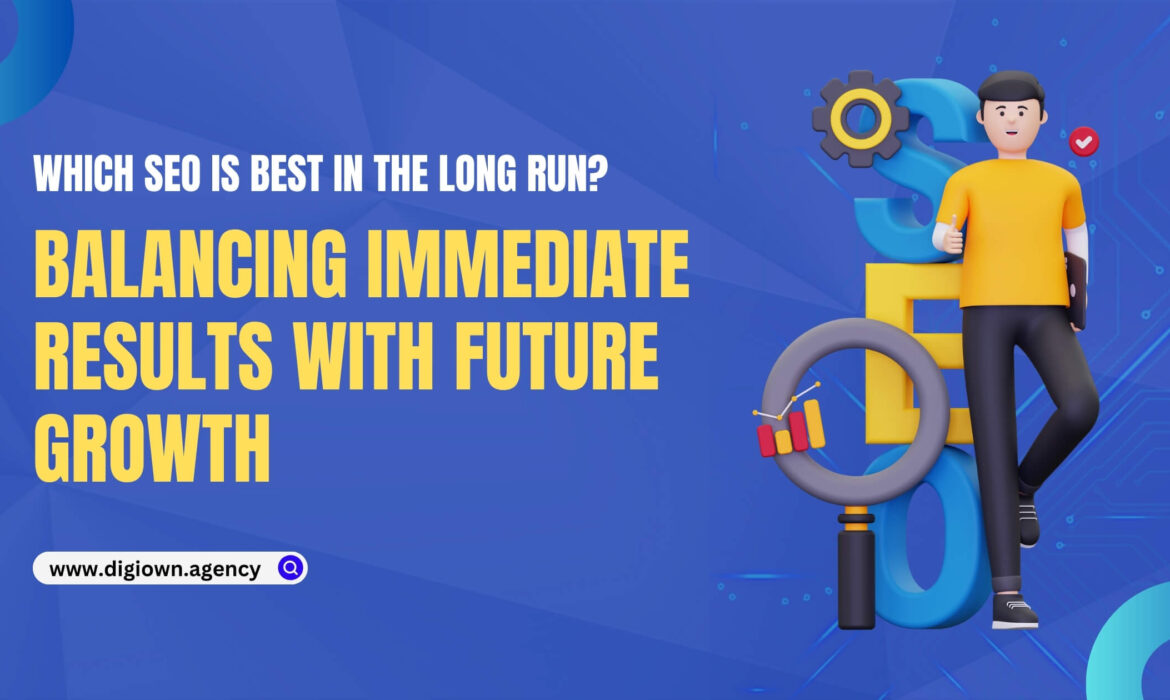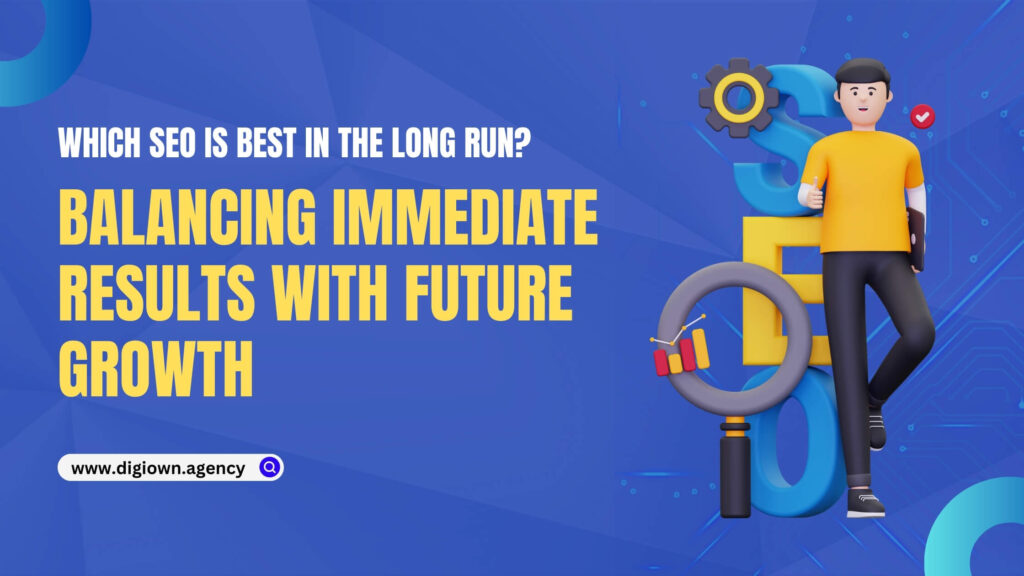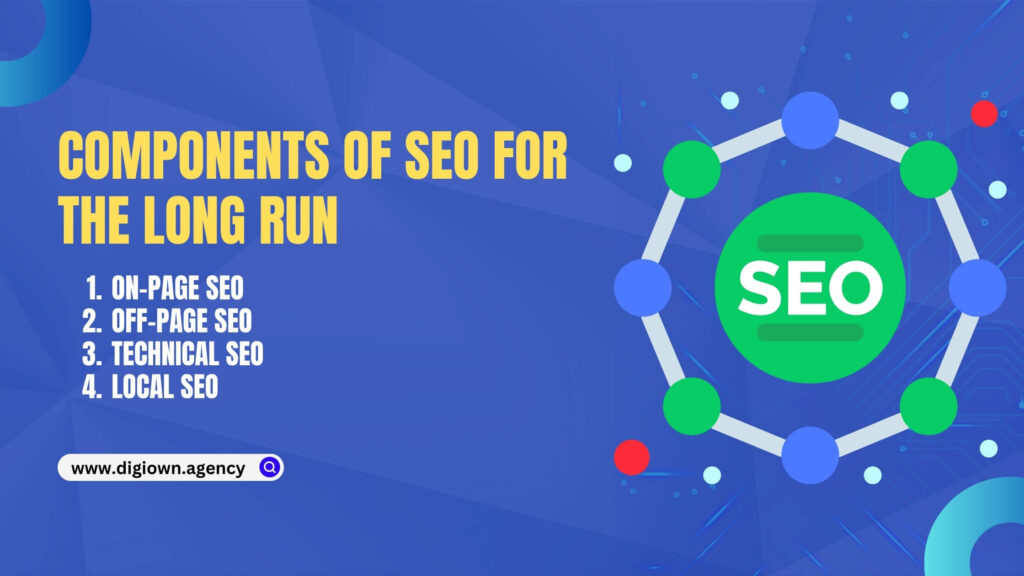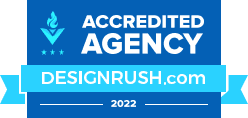

Imagine investing time, effort, and resources into building your online presence, only to watch it crumble because of poor SEO choices. It’s like constructing a magnificent castle on a shaky foundation. To ensure your digital kingdom stands the test of time, you need to choose the right SEO strategy. But with so many options—white hat, black hat, and grey hat—which one truly reigns supreme in the long run? This blog is your guide to understanding which SEO is best for long run success, helping you make informed decisions for enduring online success. Let’s dive into the intricacies of SEO to find the most sustainable path forward!
Table of Contents
Understanding SEO and Its Importance
SEO, or Search Engine Optimization, is the practice of enhancing a website to increase its visibility in search engine results pages (SERPs). The primary goal is to attract more organic (non-paid) traffic to the site. This involves various strategies, including keyword research, content creation, and technical improvements.

Components of SEO for the Long Run
Here, we delve into the four primary components of SEO: On-Page SEO, Off-Page SEO, Technical SEO, and Local SEO, each playing a vital role in a comprehensive SEO strategy.
On-Page SEO
On-page SEO refers to the optimization techniques applied directly within the website to improve its search engine ranking and attract more relevant traffic. It focuses on both the content and HTML source code of pages that can be optimized.
Key Elements of On-Page SEO
- Keyword Research and Optimization
- Keyword Research: The foundation of any SEO strategy. Identify relevant keywords that potential customers use to find products or services.
- Keyword Placement: Strategically place primary and secondary keywords in titles, headers, meta descriptions, and throughout the content.
- High-Quality Content
- Content Creation: Produce engaging, informative, and valuable content that meets the needs of your audience.
- Content Format: Use a mix of text, images, videos, and infographics to enhance user engagement.
- Content Length: Long-form content often performs better in search rankings.
- Meta Tags Optimization
- Title Tags: Craft compelling and keyword-rich titles that accurately describe the page content.
- Meta Descriptions: Write concise and enticing meta descriptions to improve click-through rates.
- Header Tags (H1, H2, H3, etc.)
- Structure Content: Use header tags to organize content hierarchically, making it easier for search engines and users to understand.
- URL Structure
- Clean URLs: Create user-friendly and descriptive URLs, incorporating primary keywords where possible.
- Internal Linking
- Link to Relevant Content: Enhance user navigation and distribute page authority across your site by linking to related pages and articles.
- Image Optimization
- Alt Text: Use descriptive alt text for images to improve accessibility and help search engines understand the content.
- File Names and Sizes: Optimize image file names and sizes to enhance page load speed.
- Mobile-Friendliness
- Responsive Design: Ensure your website is accessible and fully functional on mobile devices.
- User Experience (UX)
- Navigation: Design intuitive and easy-to-use navigation menus.
- Engagement: Implement interactive elements like comment sections, social share buttons, and calls to action (CTAs).
Off-Page SEO
Off-page SEO involves activities conducted outside of the website to improve its authority and ranking. It primarily focuses on building backlinks from reputable sites and enhancing the site’s reputation.
Key Elements of Off-Page SEO
- Backlink Building
- Quality over Quantity: Focus on acquiring backlinks from authoritative and relevant websites.
- Guest Blogging: Write and publish articles on reputable sites to gain backlinks and drive traffic.
- Social Media Engagement
- Brand Presence: Use social media platforms to increase brand visibility and drive traffic to your site.
- Content Promotion: Share your content across social media channels to reach a broader audience and encourage shares.
- Influencer Outreach
- Collaboration: Partner with influencers in your industry to promote your content and gain valuable backlinks.
- Online Reviews and Reputation Management
- Encourage Reviews: Request satisfied customers to leave positive reviews on platforms like Google My Business, Yelp, and industry-specific review sites.
- Respond to Feedback: Actively manage and respond to customer reviews to maintain a positive online reputation.
- Forums and Community Participation
- Engage in Discussions: Participate in relevant forums and online communities like Reddit, Quora, and industry-specific boards to share expertise and build backlinks.
- Press Releases
- Newsworthy Content: Distribute press releases about significant company updates or milestones to gain media coverage and backlinks.
Technical SEO
Technical SEO involves optimizing the technical aspects of a website to improve its crawlability, indexability, and overall performance. It ensures that search engines can effectively access, crawl, and index the site.
Key Elements of Technical SEO
- Website Speed Optimization
- Minimize HTTP Requests: Reduce the number of requests made by the browser to load resources.
- Compress Files: Use Gzip compression for HTML, CSS, and JavaScript files.
- Optimize Images: Use appropriate image formats, compress images, and implement lazy loading.
- Mobile-Friendliness
- Responsive Design: Ensure the site’s design and layout adapt to different screen sizes.
- Mobile Usability: Optimize touch elements and ensure easy navigation on mobile devices.
- Crawlability and Indexability
- XML Sitemaps: Create and submit an XML sitemap to help search engines understand your site structure.
- Robots.txt File: Use the robots.txt file to guide search engines on which pages to crawl and index.
- Structured Data Markup
- Schema Markup: Implement schema markup to provide search engines with additional context about your content, enhancing rich snippets.
- Secure Sockets Layer (SSL)
- HTTPS: Ensure your website uses HTTPS to encrypt data and improve security.
- Canonical Tags
- Duplicate Content: Use canonical tags to indicate the preferred version of a webpage, avoiding duplicate content issues.
- 404 Error Handling
- Custom 404 Pages: Create user-friendly 404 error pages with navigation options to improve user experience.
- Website Architecture
- Hierarchical Structure: Organize content in a clear and logical structure to improve crawlability and user experience.
Local SEO
Local SEO focuses on optimizing a website to attract more business from relevant local searches. It is especially crucial for businesses with physical locations or those serving specific geographic areas.
Key Elements of Local SEO
- Google My Business (GMB)
- Complete Profile: Ensure your GMB profile is fully filled out with accurate business information.
- Regular Updates: Post updates, offers, and announcements to keep your profile active.
- Local Citations
- Consistency: Ensure your business name, address, and phone number (NAP) are consistent across all local directories and listings.
- Quality Directories: List your business on reputable local directories like Yelp, TripAdvisor, and industry-specific sites.
- Customer Reviews
- Encourage Reviews: Request satisfied customers to leave positive reviews on Google, Yelp, and other review platforms.
- Respond to Reviews: Actively engage with reviews to show customers you value their feedback.
- Local Keywords
- Geo-specific Keywords: Use keywords that include your city or region to optimize for local searches.
- Localized Content: Create content that is relevant to your local audience, including local news, events, and case studies.
- Local Backlinks
- Community Engagement: Partner with local businesses, organizations, and influencers to gain backlinks from local sites.
- Sponsorships and Events: Sponsor local events or participate in community activities to build local backlinks and brand presence.
- NAP Consistency
- Accurate Information: Ensure your business name, address, and phone number are consistent across all online platforms and listings.
- Mobile Optimization
- Local Searches: Optimize your site for mobile devices, as many local searches are conducted on smartphones.
- Local Content
- Community Focus: Develop content that addresses local interests and issues, helping to engage the local audience.

White Hat, Black Hat, and Grey Hat SEO
There are three main types of SEO strategies: White Hat SEO, Black Hat SEO, and Grey Hat SEO. Each type has its own set of practices, ethical implications, and risks. Understanding these categories is crucial for determining which SEO is best for long run and making informed decisions that align with business goals and search engine guidelines.
White Hat SEO
White Hat SEO refers to the use of optimization strategies, techniques, and tactics that focus on a human audience opposed to search engines and completely follow search engine rules and policies.
Key Practices of White Hat SEO
- Quality Content Creation
- Valuable Information: Producing high-quality, relevant, and informative content that provides value to users.
- Content Uniqueness: Ensuring that the content is original and not duplicated from other sources.
- Keyword Research and Optimization
- Relevant Keywords: Using keywords that accurately reflect the content and search intent of users.
- Natural Integration: Incorporating keywords naturally into the content without overstuffing.
- Link Building
- Organic Backlinks: Earning backlinks naturally from authoritative and relevant websites through high-quality content.
- Guest Posting: Writing articles for reputable blogs and websites to gain exposure and backlinks.
- On-Page Optimization
- Meta Tags: Crafting accurate and compelling meta titles and descriptions.
- Header Tags: Using header tags (H1, H2, H3) to structure content logically.
- User Experience (UX)
- Website Usability: Ensuring the website is easy to navigate, responsive, and accessible.
- Page Speed: Optimizing the website’s loading speed to enhance user satisfaction.
- Mobile Optimization
- Responsive Design: Ensuring the website works well on all devices, including mobile phones and tablets.
Benefits of White Hat SEO
- Sustainability: Adhering to search engine guidelines ensures long-term results without the risk of penalties.
- Trust and Credibility: Builds trust with users and search engines, enhancing the website’s reputation.
- User Satisfaction: Focuses on providing a positive experience for users, which can lead to higher engagement and conversions.
Black Hat SEO
Black Hat SEO involves practices that violate search engine guidelines and aim to manipulate search engine algorithms to achieve higher rankings. These techniques can offer short-term gains but come with significant risks.
Key Practices of Black Hat SEO
- Keyword Stuffing
- Overuse of Keywords: Excessively using keywords in content, meta tags, and alt text to manipulate rankings.
- Cloaking
- Hidden Content: Showing different content to search engines than what is visible to users.
- Link Schemes
- Buying Links: Purchasing backlinks to artificially inflate the website’s authority.
- Link Farms: Using networks of low-quality sites to generate a large number of backlinks.
- Duplicate Content
- Content Duplication: Copying content from other websites without permission to increase content volume.
- Hidden Text and Links
- Invisible Elements: Using white text on a white background or hiding links to manipulate rankings.
- Doorway Pages
- Manipulative Pages: Creating low-quality pages that are stuffed with keywords and designed to rank well but redirect users to different content.
Risks of Black Hat SEO
- Penalties: Search engines can penalize or even ban websites caught using black hat techniques, resulting in a significant drop in rankings or complete removal from search results.
- Reputation Damage: Engaging in deceptive practices can harm the website’s reputation and credibility with users.
- Short-term Gains: While black hat tactics might provide quick results, they are not sustainable and can lead to long-term losses.
Grey Hat SEO
Grey Hat SEO falls somewhere between white hat and black hat SEO. It involves practices that are not explicitly against search engine guidelines but are still questionable and carry some risk.
Key Practices of Grey Hat SEO
- Buying Expired Domains
- Link Equity: Purchasing expired domains with established link equity and redirecting them to your site.
- Link Exchange
- Reciprocal Linking: Exchanging links with other websites to increase backlinks.
- Content Spinning
- Article Rewriting: Using software to rewrite existing content to create “new” articles that are not duplicated but are of lower quality.
- Clickbait Titles
- Enticing Headlines: Using sensational or misleading headlines to attract clicks and increase engagement.
- Social Media Automation
- Automated Engagement: Using bots to increase followers, likes, and shares on social media platforms.
Pros and Cons of Grey Hat SEO
- Advantages: Can provide quicker results than white hat techniques without the immediate risks associated with black hat methods.
- Disadvantages: Still carries the risk of penalties if search engines update their algorithms to target these practices. Can also harm the website’s reputation if users perceive the tactics as manipulative.
So, the question is, What Type of Long Term SEO Strategy is Best?
You’ve probably already guessed it.
White hat SEO is the ultimate long-term strategy for businesses aiming for sustainable growth in website traffic and sales. While the process of ranking a site organically with white hat techniques requires patience and can sometimes be challenging, it offers a reliable path to success. The biggest advantage? You won’t face penalties from Google, the primary source of traffic for nearly every industry. By adhering to ethical SEO practices, you secure your site’s future and build a strong foundation for continued growth and stability in search engine rankings.
In conclusion, the search for which SEO is best for long run leads us to the undeniable conclusion that white hat SEO, with its emphasis on ethical practices and user-centered strategies, is the optimal choice for enduring online success.






